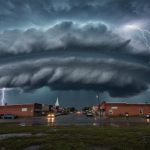Author Archives: iAlert.com
Three P’s of Safe Winter Driving
Winter driving can be hazardous and scary, especially in northern regions that get a lot of snow and ice. Additional preparations can help make a trip safer, or help motorists deal with an emergency. This sheet provides safety information to help prevent motor … Read More…
Significant TORNADO and SEVERETHUNDER STORM threat for Monday October 13, 2014
Severe weather threat for Monday October 13, 2014. For threat level and location go to http://ialert.com/severe-weather-outlook.php To monitor real-time tornado and severe thunderstorm alerts to to http://iAlert.com. For text alerts sign-up at http://iAlert.com/services. Be alert and safe today!
iAlert.com Service Configuration Guide
Need help in configuring your iAlert Weather and Emergency Alert Notification services? Download the iAlert.com Service Configuration Guide by clicking here or by clicking the image below. Remember all account management is done inside your online account by first logging in at http://iAlert.com/login.php. … Read More…
iAlert.com Weather and Emergency Alert Notification Service Summary
iAlert Services LLC is a credentialed professional software development company specializing in critical communications. iAlert.com Weather and Emergency Alert Notification Service is the flagship project: Services are low cost, highly reliable; designed, developed, and managed by former National Weather Service (NWS) Meteorologist and … Read More…
September is National Preparedness Month, Be Disaster Aware, Take Action to Prepare
We all think “It won’t happen to me”, however it could very well happen. Now is the time to prepare. You never know when disaster will strike. Neither did Chantel, Abby, or Adam. Meet three survivors from three recent natural disasters: Hurricane Sandy; … Read More…
How Tornadoes Form
The formation of a tornado can be broken down to three stages: 1) low level horizontal spin, 2) updraft tilting, and 3) vertical rotation. Stage 1 (Low Level Horizontal Spin) Before thunderstorms develop, winds change direction and increase in speed with altitude. This … Read More…
Tornado Facts
Although tornadoes occur in many parts of the world, they are found most frequently in the United States. In an average year, 1,2000 tornadoes cause 60-65 fatalities and 1,500 injuries nationwide. Learn How Tornadoes Form | Criteria for a Tornado Warning Tornado … Read More…
-

-
Thunderstorm Basics: Structure, Types, and Forecasting Methods
August 29, 2025
-

-
Saffir-Simpson Hurricane Wind Scale
June 9, 2025

